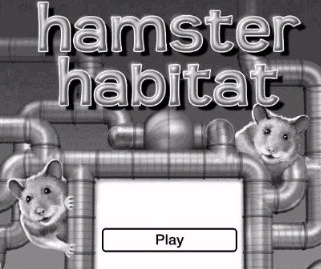
I love my Kindle — and so do a lot of other people. So one of my favorite things is reading what other Kindle owners have shared about their own experiences. “We greatly value the feedback we receive from our customers,” Amazon writes on the Kindle’s page on Facebook, “and thought we’d share a few of the messages that made us smile!”
You can read the messages at facebook.com/Kindle — but I was delighted to read the story of a unser named Janet K, who said the Kindle even made it easier to eat food! “No more problems trying to read and have dinner at the same time. No more smudged pages due to French Fries.” (Of course, she also recognized other ways in which Kindle-reading was less messy than a pile of printed books. “No more ink-stained fingers. No more trying to jam bulky books into my purse. I love my Kindle…â€)
And one of my favorite comments came from a woman named Kathy E. “if I knew how to compose a song about how much I love my Kindle I would!!!â€
But Amazon also got an e-mail from “Jason M,” and he identified what I thought was one of the greatest benefits of a Kindle: many of the greatest books of all time are now free! “I’m an avid reader and a big fan of classic literature,” he writes, “much of which Amazon offers for free on the Kindle. The Kindle and the Amazon store combination is like having your own public library in your pocket… This is a bookworm’s dream.â€
If you’re looking for more comments about the Kindle, read the reviews left at Amazon.com. The Kindle Fire tablet has received nearly 15,000 different customer-written reviews, and the “Kindle Keyboard” — Amazon’s previous-generation device — has racked up a whopping 35,871 reviews. (“A hesistant buyer rejoices on his choice,” wrote one man in Colorado. “Boy am I glad I made this purchase…. It is much better in person…”) It’s fun to see that “ordinary” users are just as enthusiastic about the Kindle as the professional technology bloggers. For example, Amazon quotes the Gizmodo blog at the top of page for the Kindle Fire tablet. (“The Fire gives me the features I want at a price point that’s less than half of the iPad 2.”) But meanwhile, back in Abilene, Texas, a mother shares an even more enthusiastic review of the device from her children. “The kids are always asking to play on the “Big Phone”. :-) It has really great color and screen resolution and the battery life is really good as well.” (And she notes that even her husband enjoys their new Kindle Fire tablet — for playing Angry Birds !)
One review began brainstorming about some new creative users for the Kindle Fire — for example, as an “exercise companion” to keep you entertained while you’re working out on a treadmill machine. And they also suggested a new potential market: doctors and dentists. “What if your customers in the waiting room were each given Kindle Fires instead of magazines?”
One of the few one-star reviews complained that the Kindle Fire tablet was too attractive — at least, when the delivery man left it on their doorstep without requiring a signature. “The Fire is shipped in a box that advertised on the outside of the box exactly what it is. ‘Hello, you, thief, please come steal me!'”
Remember, if you have your own Kindle story, Amazon would like to hear it, too! “Please send us your own comments at any time,” they remind Kindle owners on the Facebook page, “via Kindle-feedback@Amazon.com .”










